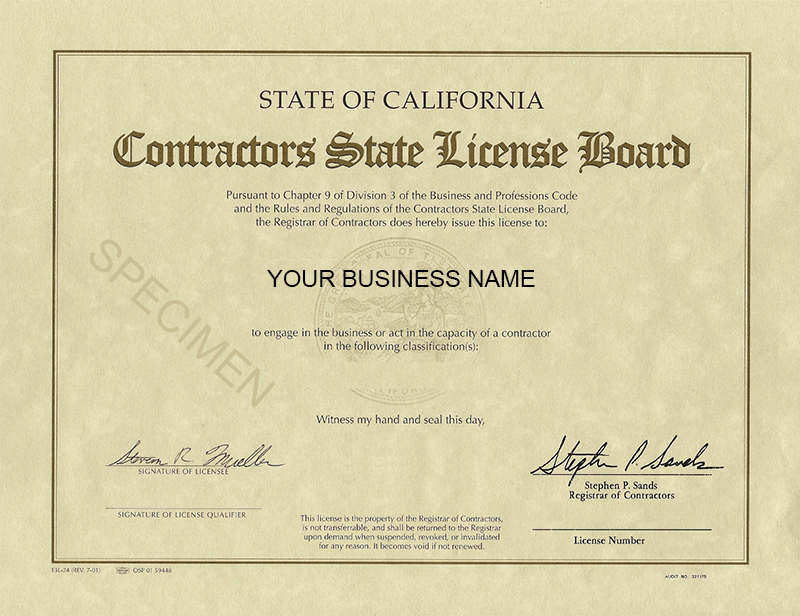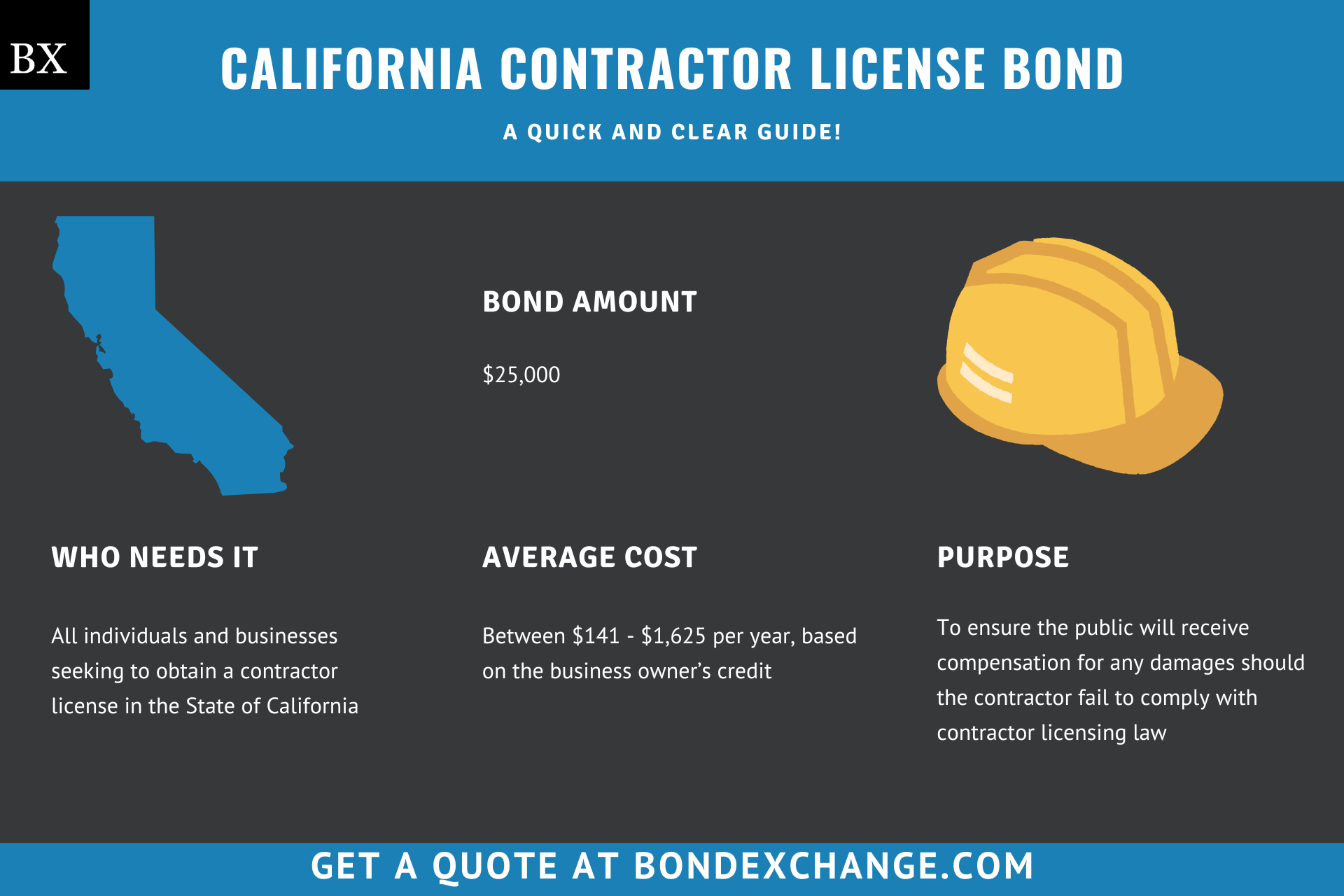California Contractor's License: Your Guide To Getting Started
Are you ready to build a future in the Golden State? Securing a California contractor's license is not just a formality; it's your gateway to a thriving career in a robust construction industry, and a commitment to consumer protection.
The California Contractors State License Board (CSLB) plays a pivotal role in the state's construction landscape. Established in 1929, the CSLB serves as the guardian of consumer protection within the construction industry, safeguarding Californians by licensing and regulating contractors. Over the decades, the CSLB has evolved, and it now oversees a vast network, licensing approximately 285,000 contractors across 45 different classifications.
| Category | Details |
|---|---|
| Governing Body | California Contractors State License Board (CSLB) |
| Mission | Protect California consumers by licensing and regulating the state's construction industry. |
| Establishment Date | 1929 |
| Contractors Licensed (approx.) | Approximately 285,000 to 290,000 |
| License Classifications | 44 to 45 different classifications (e.g., General Building, Plumbing, Electrical, Painting) |
| Legal Requirement for Licensing | Construction or remodeling projects exceeding $500 in labor and materials. |
| License Bond Requirement | $15,000 |
| Exam Administrator | PSI Exams (contracted by CSLB) |
| Website for Information | www.cslb.ca.gov |
California's construction industry is governed by strict regulations, designed to ensure consumer safety and the integrity of construction projects. The CSLB's primary function is to protect consumers from unlicensed work, instances of fraud, and unsafe construction practices. The scope of the CSLB's oversight is broad; any business or individual involved in constructing or altering any building, highway, road, parking facility, railroad, excavation, or any other structure within California is subject to licensing. This requirement kicks in if the project necessitates a building permit, involves employee labor, or if the combined cost of labor and materials exceeds $500.
Obtaining a contractor's license in California is a structured process that demands both preparedness and adherence to the regulations. The initial step involves pinpointing the specific license classification that aligns with your intended scope of work. This could be General Building, Electrical, Plumbing, or one of the many specialized categories available. Once the correct classification is determined, the next phase involves completing and submitting a comprehensive application, followed by passing a state-administered examination. Finally, supporting documentation must be provided to substantiate the application.
For those who have previously held a license in good standing within the past five years, or who have successfully completed the law and trade examinations within the same timeframe, as defined in Business and Professions Code Section 7065, the examination requirement may be waived. This provision acknowledges the experience and existing qualifications of seasoned professionals.
The examination administered by the CSLB is a crucial step in the licensing process. The CSLB has contracted with PSI Exams to administer the examinations. The test assesses an applicant's knowledge of the trade, as well as their understanding of the laws and regulations governing the construction industry in California. Proper preparation for the exam is essential for ensuring success. Detailed study guides and resources are available to help aspiring contractors prepare for the exam and to navigate the requirements.
The CSLB's licensing process ensures that all contractors meet the necessary standards to safeguard consumers. It encompasses the following core elements:
- Eligibility Verification: Before applying, you must confirm that you meet all the eligibility criteria set by the state.
- Application Submission: A detailed application must be submitted to the CSLB.
- Examination: Candidates must pass a state-administered examination.
- Supporting Documents: Applicants are required to provide all necessary supporting documents.
The necessity of a contractor's license in California is underscored by state law. Construction and remodeling projects exceeding $500 in combined labor and material costs are legally required to be performed by a licensed contractor. This legal requirement underscores the CSLB's responsibility to enforce compliance with state regulations, as well as protect consumers against unlicensed work, instances of fraud, and unsafe construction practices. Moreover, a valid license is a sign of professionalism and can enhance client trust.
California offers a range of contractor license classifications, each catering to specific construction trades. There are 44 distinct classifications. These include general building, plumbing, painting, electrical, and many others. General Building contractors are the most broadly licensed. They can handle various construction projects, including residential and commercial builds. Specialty classifications focus on trades such as electrical, plumbing, and HVAC. Each license grants the holder authorization to perform work within its designated scope. Choosing the correct classification is crucial to ensure compliance with California's licensing rules. The appropriate license must match the work the contractor intends to perform.
Licensed contractors in California are required to maintain a contractor license bond, with a minimum value of $15,000. The bond acts as a financial guarantee covering potential liabilities, such as incomplete work, defective workmanship, or violations of Californias construction laws. It is in place to ensure contractors fulfill their contractual obligations and to provide financial recourse for consumers if a contractor fails to meet the agreed-upon terms. However, it is essential to recognize that a $15,000 bond may not always cover all claims. Claims can arise from multiple complaints or for projects with a value greater than the bonds coverage.
In addition to understanding the requirements for initial licensure, it's also critical to be aware of the guidelines regarding license numbers. California contractor license numbers do not contain alphabetic characters. Each contractor receives a unique, numeric license identification number. The number is displayed on the physical license card. When entering your license number, be sure to begin from the leftmost position and don't exceed a total of eight digits.
Obtaining or renewing a contractors license is a process with distinct steps, costs, and renewal requirements. First, you must ensure eligibility by confirming you meet the licensing requirements. Next, complete and submit your application. Then, prepare for and pass the states examination. After that, ensure you submit all supporting documents. Finally, renew your license as per the guidelines. The cost of a contractor's license in California varies, including application fees, examination fees, and license fees. Renewals require periodic fees, and continuing education may be required to stay compliant with CSLBs standards. For detailed, up-to-date information on fees, please refer to the CSLB website.
Staying compliant with Californias licensing regulations is a must for contractors. Renewal is required every two years. The CSLB provides detailed instructions for the renewal process. You may be required to complete continuing education courses to maintain and renew your license. Ensure that your bond remains valid and current. Keep your contact information updated with the CSLB. Regularly review any changes or updates to the laws and regulations governing California's construction industry. Doing so will help ensure you are aware of any modifications.
The path to becoming a licensed contractor in California may appear to be complex. However, by thoroughly understanding the requirements, following the steps, and maintaining compliance, you can establish a successful career in the construction industry. The CSLB's oversight ensures that licensed contractors maintain ethical and professional standards, which is vital for protecting consumers.
The content provided is for informational purposes only. Contractors and anyone considering obtaining a license should refer to the California Contractors License Law & Reference Book for complete and specific guidance. This is because laws and regulations may change. The CSLB website, www.cslb.ca.gov, serves as the definitive source for up-to-date information on licensing, regulations, and industry updates. For those interested in receiving updates electronically, you can subscribe to email alerts. This way, you can keep up-to-date with any changes.


